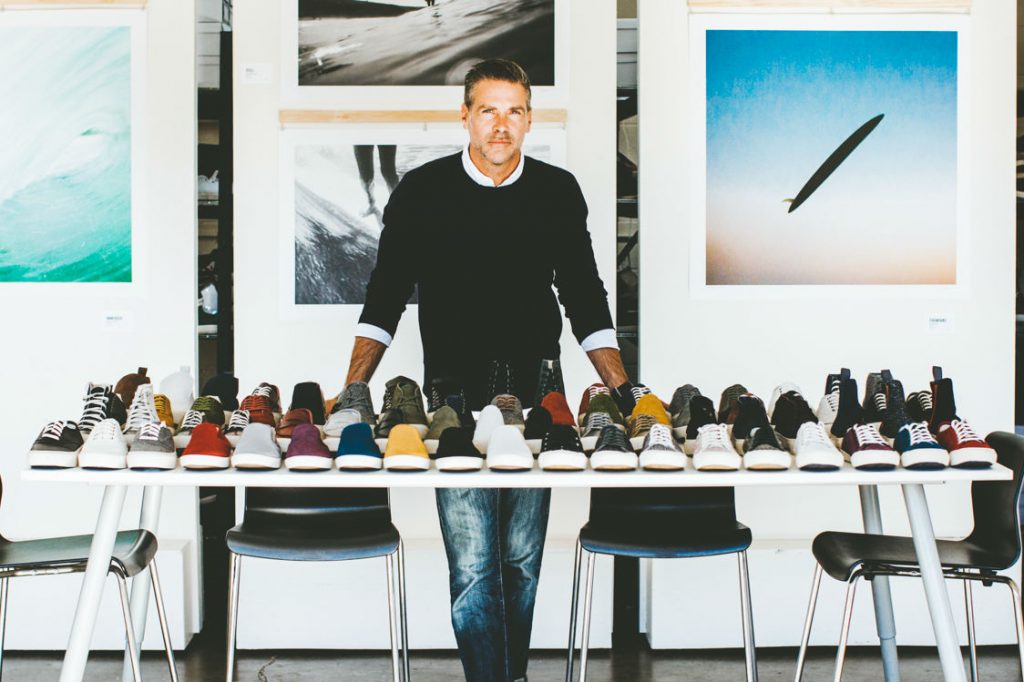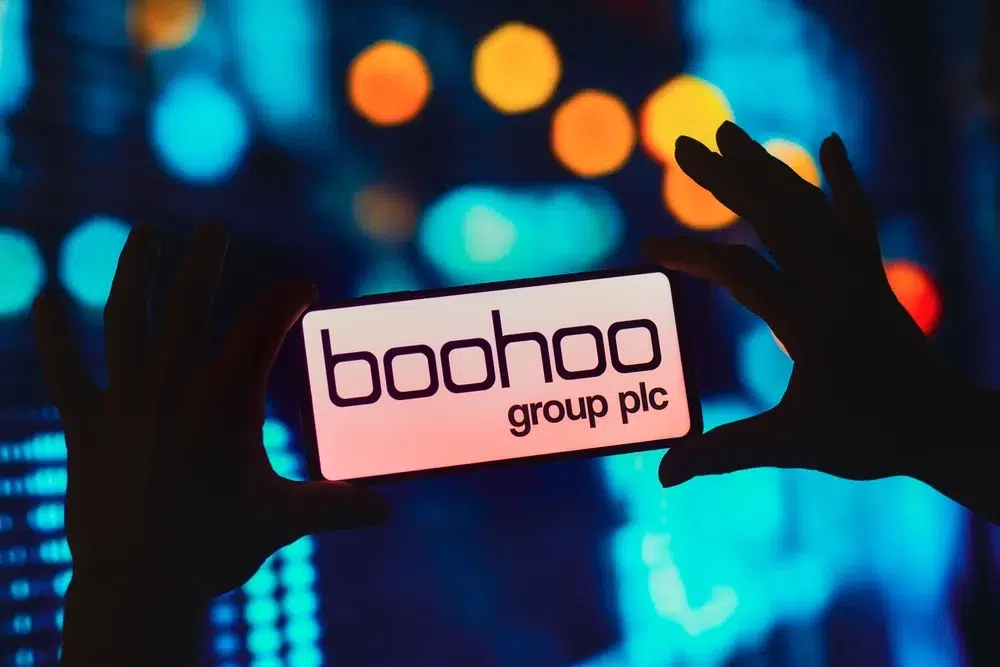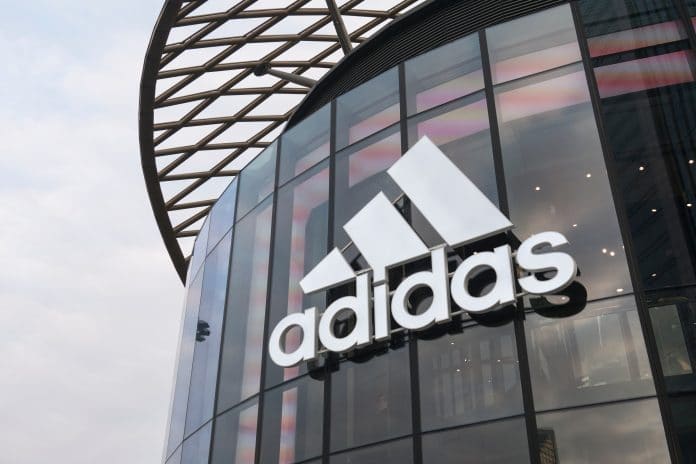Congrats on bringing SeaVees to the UK! How does it feel to have crossed the pond?
This is a very exciting time for SeaVees and our entry into the UK is especially meaningful as it formalises – in a public way – our partnership with Pentland Brands on their home turf.
Tell me about the SeaVees story.
SeaVees was first launched in 1964 by the tire company B.F. Goodrich when it was customary for tire brands to take their rubber making expertise to the sneaker – or trainer – category.
The introduction was supported by a groundbreaking advertising campaign that ran in major US magazines throughout the 1960s, encouraging people to “Show Up In SeaVees – The New Way To Go Casual”.
The images evoked a casual coastal lifestyle that defined California in its golden age. The brand changed hands in 1969 and ultimately was shuttered in 1971 due to monopolistic complaints.
SeaVees would lay dormant for over 40 years until I was soul searching and wandered into a secondhand store in Tokyo.
It was there, behind glass, that I discovered a vintage pair of SeaVees. I knew at first sight I needed to revive this forgotten 1960s California dream.
SeaVees helped make sneakers transition from gym shoes to a fashionable, casual item in the 1960s. Tell us more about that.
In mid-century America, the sneaker was meant to be worn in the gym, carried in a gym bag, stored in a gym locker. Things started to change in the early 60s with sportswear gaining popularity and suddenly SeaVees appeared on the scene proclaiming you could now “Show Up In SeaVees” to any social affair with the comfort of a sneaker but the class and sophistication of a more refined, dressier shoe.
Today we honor our heritage as a category creator – the original casual sneaker – by adding modern amendments to retro-inspired designs that have an understated elegance.
What’s in store for SeaVees 2018?
Our plans for the year ahead include expanding into a few other select countries and debuting our first children’s footwear collection.
We are working on a new social and environmental accountability initiative that complements and further solidifies our ongoing efforts as a one per cent For The Planet member.
On the product specific side, I’m most excited about our newest silhouette – the California Special. Named after a limited edition 1968 Ford Mustang that was offered exclusively to Golden State residents, it’s a mid-cut racing inspired sneaker that really captures the timeless appeal of 1960s California muscle car culture.
How is SeaVees addressing some of the challenges facing the retail industry as a whole?
By remaining nimble and dynamic, and approaching each day as an opportunity to challenge what we think we know.
Obviously I have more experience today than I’ve ever had at any point in my career. But honestly, never have I felt my experience means less, is of less value. And I find that thrilling as it stretches you and forces you to adapt.
What would you say is the biggest risk for the retail sector?
The biggest risk is losing our courage. It takes courage to be creative. Creativity is fueled by optimism and optimism is one of the first things to go in times of unrest. More than ever, retail needs steadfast merchants with confident points of view.
Describe your role and responsibilities as CEO of SeaVees.
Brand steward, storyteller, shoemaker, dreamweaver – whatever it takes to return SeaVees to its rightful place on the top shelf of global heritage sneaker brands.
Tell us a bit about yourself and your background before SeaVees.
As a landlocked kid growing up in Oklahoma, I always wanted to be from California. My buddies and I were frustrated, wannabe surf kids. We’d skate on the school blacktop and listen to Beach Boys records. So the influence was deep and resulted in a lifelong desire to live the California dream.
From an early age I was always interested in shoes – especially sneakers. I worked my way through high school and college selling clothing and footwear at a better men’s store. On the retail selling floor I’d always favor the footwear department and would spend most of my paycheck there.
We carried Cole Haan at our store and at the time I really related to the brand. I targeted them post-graduation as the place I’d like to work and was lucky enough to begin my career there.
That led to years of brand building and repositioning opportunities for me. When I worked on the Keds, Pro-Keds and Sperry Topsider brands in the early 2000s, I realised my affinity for heritage and that I had been suppressing a deep desire to be an entrepreneur. Shortly thereafter I began my search that led to the rediscovery of SeaVees. Little did I know in finding the old shoe I had finally found myself.
What is the most challenging aspect of your job?
In the beginning it was having people see your vision. Even my family thought I was crazy to sacrifice my corporate career to bring back a brand no one remembered.
I learned to take my stubbornness – a detriment at times earlier in my career – and turn it into a virtue. Without conviction, SeaVees would have never survived the early stages.
Today, the challenge is preserving that vision – protecting the culture we have built – as we onboard new people to our team, expand into new markets, enter new product categories.
And the most rewarding?
Seeing people in our shoes is the most gratifying feeling in the world. Having team members that become family – and are as passionate about the brand as I am – is beyond rewarding. And spending my days doing something that never feels like a job – that is a natural extension of me – is pretty special.
Click here to sign up to Retail Gazette‘s free daily email newsletter


















